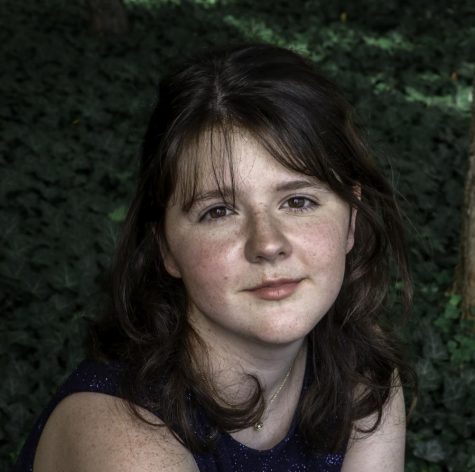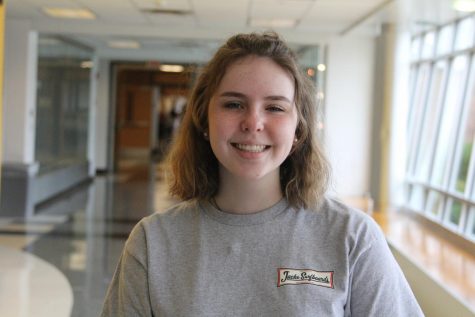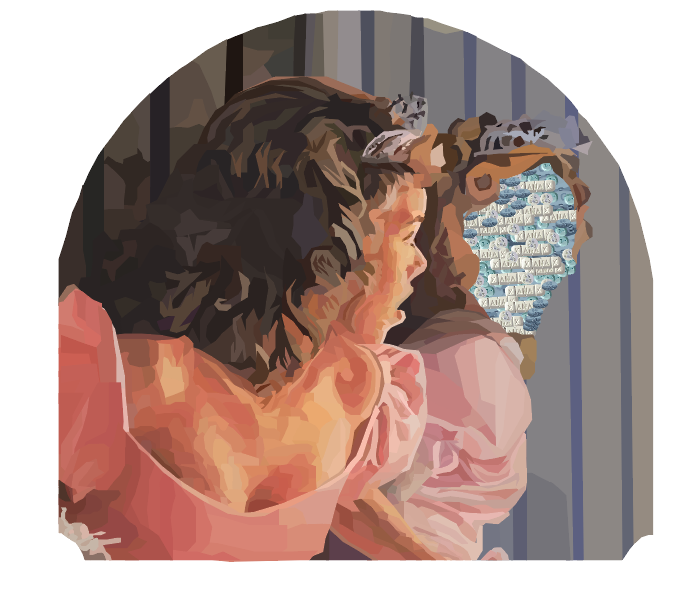Dangerous Dosage
When a problem approaches, it is an instinct to look for a way to escape them. With depression and anxiety rates increasing among teens, youth will sometimes turn to the wrong choices. Some have severe repercussions, such as drug abuse. Now, more than ever, it’s easier to get access to prescription medication, but easy access comes with life-threatening side effects. The Tiger Print sat down with students and professionals to expose the dangers of these habits.
Warning Signs & Dangers
North America continues to experience the highest drug-related mortality rate in the world, accounting for 25 percent of drug-related deaths globally, according to the International Overdose Awareness Day.
The Drug Enforcement Association also claims that once an adolescent is addicted, his or her brain changes so that drugs are now the top priority. He or she will compulsively seek and use drugs, even though doing so brings devastating consequences to the individual as well as those who care about them.
Being addicted to prescription drugs can affect one negatively, especially developing brains in adolescents.
Effects of using vary depending on the drug being misused, but commonly include hiding emotions, decreased motivation, psychological problems, high-risk behavior due to lack of judgment and expanding from using prescription drugs to other illegal drugs as a gateway.
An opiate overdose, according to American Addiction Center, typically leads to a very depressed central nervous system, which is responsible for your respiratory drive while sleeping. An overdose can cause someone to stop breathing while unconscious, which could result in permanent brain damage or death.
As stated by the National Institute on Drug Abuse, people with an addiction to drugs are about twice as likely to suffer from mood disorders and anxiety disorders. In 2015, roughly 43.4 million adults said they have some form of mental illness; 8.1 million of those abuse some form of substance or another mental illness.
The Delta Medical Center states that someone with a first-degree relative — parent, sibling or another relative with whom they live — is at a greater risk to start abusing prescription drugs. Although it is not limited to the same drug that the relative uses, it is commonly due to being around medications that are popular for recreational use.
Common warning signs of addiction can vary depending on the type of drug being misused. In opioid painkillers, such as Oxy, common signs include nausea, euphoria, slowed breathing rate and drowsiness. Stimulants like Adderall cause side effects such as reduced appetite, high body temperature, agitation and insomnia.
Student Experiences
Blue Valley student Janis*, whose name has been changed in order to maintain anonymity, shared her experience with medication abuse.
Janis described the setting for the first time she recreationally used the cold medication Coricidin, commonly known as Triple Cs.
“I was at a hangout about three years ago when I first took Triple Cs,” Janis said. “I took three or four and I was tired, but I wasn’t out I was just drowsy and droopy. I’m not gonna lie it did feel good though. But I was drowsy and tired for the next two to three days.”
Janis said Triple Cs is known to make the user feel tired and drowsy.
“It was like you wanted to go to sleep,” Janis said. “It’s like you’re daydreaming in that one boring class you have where you’re there and you want to sleep but you’re still awake — that’s the feeling you have.”
Janis said in addition to taking Triple Cs recreationally she had taken Oxycontin; however, Janis said that Oxycontin is something you do not want to mess with. “Two of those can have you off the moon. When I took them my head was ringing and I really did not want to do anything. It’s either you’re really focused, or you’re just out of it. When I took oxy for the first time I was out of it. It was really bad.”
Janis said the experience after the high was rough because her head and stomach hurt and she needed to use the bathroom frequently.
Janis also said she took the medications whenever she felt like she wanted to and acquired these medications free of charge from people who were prescribed them.
“If I was going to school and wanted the day to go slow, I would pop one,” Janis said. “Or if I was at a party and I wanted to be in the moment longer I would take an Oxy or a Triple C and slow the time down. I would also pop pills out of boredom.”
Janis said she has stopped taking pills regularly because “they can change you as a person if you let it get out of hand.”
Janis said she does not have a physical or psychological dependence on these medications and that her willpower is what assists her progress toward sobriety.
“If you have mental disorders, problems or a bad attitude, popping pills is really not something you want to get into,” Janis said. “It will change your attitude, the way you see life and the way you act toward certain people. So stay away, Certain people have gotten away from me because of my attitude and the way I was acting when I was popping pills consistently. So stay off and away.”
To maintain student anonymity, this BV student’s name has been changed to Brooklyn.
Brooklyn said she has been taking ADHD medicine since she was 3. However, in the summer of 2018, she was prescribed a new medication called Concerta. According to Healthline, Concerta is an extended-release oral tablet that is used to treat ADHD. After starting Concerta, Brooklyn was admitted to the hospital.
“It metabolized in my liver,” Brooklyn said. “It was such a high dose to begin with that most people who take [that dosage] have a tolerance to it.”
Brooklyn said she had no memory of being hospitalized and only remembers waking up in the hospital. She did not remember the dosage of medicine she was prescribed. Without consulting her guardian first to find out.
“I still don’t remember what was going on,” Brooklyn said. “[Anything] I [know about that day] is from what people told me. None of my medications had caused anything like this and that’s why it’s so strange.”
Even after this experience, Brooklyn said she is still thankful to be taking ADHD medications.
“Since I’ve been on medication, it’s made school an option for me rather than homeschool, which is what my mom wanted to do,” she said. “Prescription drugs already have serious side effects so abusing them could speed up the effects and enhance them in awful ways.”
A Professional Opinion
From Saint Luke’s Primary Care, Doctor Rebekah Abbott shares her knowledge on abusing prescription drugs.
Abbott said prescription drugs, like opioids, can help control pain but also have consequences like the suppression to breathe.
“Our bodies have these mechanisms that realize we have this much oxygen and this much carbon dioxide and when carbon dioxide goes up, we breathe faster,” Abbott said. “[Taking opiods] suppresses that drive to where you don’t realize that you need to breathe.”
Abbott said using prescription drugs regularly can also cause long-term effects, such as changing the way a person can feel pain.
“[Prescription drugs] actually change the pain receptors to the point where a less amount of pain feels stronger,” Abbott said. “It can make you need more and more. The next thing you know, you’re dependent on it.”
Abbott said a drug called Benzodiazepines, used to treat panic attacks, insomnia and seizures, can even damage the teenage brain when abused.
“It interferes with your ability to learn, form memories, maintain the knowledge that you’re learning, [and] to learn the skills you need to as an adult, like how to problem-solve,” Abbott said.
Abbott said the reason people get addicted to drugs is multifactorial.
“Part of it may just a genetic predisposition to addiction that they inherit,” Abbott said. “Part of it may be some underlying anxiety or depression. Sometimes they can get addicted to the mental effects of the medication because it produces a sense of well being.”
Abbott even said when using a drug in the past, there is still a possibility of getting addicted to the drug later.
“There is a risk for anyone at any point in their life if they’ve taken [prescription drugs] before,” Abbott said. “Just because somebody had no signs of addiction at one point, we still need to be aware that it can happen.”
Abbott said she knows how to take action if one of her patients is addicted to a prescription drug, but didn’t in the beginning of her career.
“It took talking to other people, calling around and finding out about resources in the area, facilities [and contacting] any physiologists that treat addiction,” Abbott said. “It took learning and looking up the legal ramifications. I knew nothing.”
Abbott said pharmacies and doctors monitor the types of medications filled and how often they are filled in order to reduce the risk of patients abusing their medications.
“If we have any suspicion we can look that up and make sure that it doesn’t look like there’s any abuse, “ Abbott said. “We also have drug testing to make sure that the only medicines in their urine are the medicines we prescribed.”
Abbott goes through a careful procedure with her patients when she prescribes a drug that has a chance of the patient becoming addicted.
“I ask about their history, their lifestyle, what kind of work they do, if they’ve had any history of any drug abuse in their past or any family history,” Abbott said. “[It is] a really comprehensive picture if the person.”
Even with an attentive course of action, patients can still develop drug addiction. Abbott said she recommends talking to someone about it.
“[The patient and I] talk about treatment programs,” Abbott said. “We talk about seeing counselors and addressing any underlying issues maybe causing them to become addicted.”
Abbott said she wants others to realize there is a purpose for prescription drugs.
“[There needs to be] more awareness and more education,” Abbott said. “[It] just needs [to be] open and out there [with] everybody talking about it.”
How to properly dispose of prescription drugs
In order to reduce the risk of others accidentally misusing prescription drugs, it is important to remove the expired or unused from home immediately. According to the FDA, the best way to do this is at home is to:
- Mix medicines with indigestible substances (dirt, cat litter, etc.)
- Put the mixture into a sealed plastic bag
- Throw the bag into the trash
- Scratch out any personal information on the prescription label of the empty pill bottle, then throw out the bottle
Types of Commonly Abused Drugs
According to the Mayo Clinic, teens are more likely to abuse three different types of popular pills in order to focus, relax or get high.
Adderall, which is often used to treat ADD and ADHD, is the most popular stimulant with 7.4 percent of high school seniors taking it in 2011, according to the National Institute of Drug Abuse. It can give a heightened sense of concentration and energy when taken. Adderall is used to boost teens’ ability to focus in places such as school or work.
Xanax, an anti-anxiety drug, is a popular depressant that can make the user feel relaxed and sometimes “transport” the user into a euphoric state of no worries. As of February 2018, up to 10% of adolescents abuse Xanax. If abused in large quantities, Xanax can drastically slow your heart rate down and addicts who abuse this depressant can likely experience seizures and death if they abruptly quit the drug.
Oxycontin is a popular opiate, with 3.6 percent of high school seniors taking it in 2011, that is prescribed for severe pain. A person using Oxycontin can experience a sense of euphoria followed by a state of drowsiness. Abuse of Oxycontin is very common and can often lead to severe abdominal pain and hypoxia, a condition in which oxygen supply is cut from the brain, leading to permanent brain damage and a possible coma.

Claire Powell is a senior and is this year’s editor-in-chief. This is her third year on staff and according to her mom, she is a silly person. Though...

Josie Cuthbertson is a junior staff writer for “The Tiger Print.” She enjoys listening to music, eating Taco Bell, and spending time with her two cats....

Vince Orozco is THE Managing Editor for “The Tiger Print.” Vince’s skills include rapping and writing long essays that nobody reads. In school, he...

Kate Oudejans is a junior staff writer for “The Tiger Print.” She enjoys learning about astrology, watching Law & Order: SVU, spending too much...




